Data Mining Algorithms for Operating Pressure Forecasting of Crude Oil Distribution Pipelines to Identify Potential Blockages
Abstract
:1. Introduction
- We propose a novel approach using data mining techniques to address the congeal problem using common real-time surveillance measurements from oilfields;
- We provide a data set from an oil pipeline system in an actual oilfield. This data set is available to other researchers for future work.
2. Materials and Methods
2.1. The Operation under Study
2.2. Machine Learning Algorithms
2.3. Performance Evaluation
2.4. Framework of the Evaluated Models
3. Results and Discussion
4. Conclusions
Supplementary Materials
Author Contributions
Funding
Institutional Review Board Statement
Informed Consent Statement
Data Availability Statement
Acknowledgments
Conflicts of Interest
References
- Obanijesu, E.O.; Omidiora, E.O. Artificial neural network’s prediction of wax deposition potential of Nigerian crude oil for pipeline safety. Pet. Sci. Technol. 2008, 26, 1977–1991. [Google Scholar] [CrossRef]
- Wang, Z.; Li, J.; Zhang, H.-Q.; Liu, Y.; Li, W. Treatment on oil/water gel deposition behavior in non-heating gathering and transporting process with polymer flooding wells. Environ. Earth Sci. 2017, 76, 1–15. [Google Scholar] [CrossRef]
- ZWang, Z.; Bai, Y.; Zhang, H.; Liu, Y. Investigation on gelation nucleation kinetics of waxy crude oil emulsions by their thermal behavior. J. Pet. Sci. Eng. 2019, 181, 106230. [Google Scholar] [CrossRef]
- Zhu, C.; Liu, X.; Xu, Y.; Liu, W.; Wang, Z. Determination of boundary temperature and intelligent control scheme for heavy oil field gathering and transportation system. J. Pipeline Sci. Eng. 2021, 1, 407–418. [Google Scholar] [CrossRef]
- Guozhong, Z.; Gang, L. Study on the wax deposition of waxy crude in pipelines and its application. J. Pet. Sci. Eng. 2010, 70, 1–9. [Google Scholar] [CrossRef]
- Banki, R.; Hoteit, H.; Firoozabadi, A. Mathematical formulation and numerical modeling of wax deposition in pipelines from enthalpy—porosity approach and irreversible thermodynamics. Int. J. Heat Mass Transf. 2008, 51, 3387–3398. [Google Scholar] [CrossRef]
- Moradi, G.; Mohadesi, M.; Moradi, M.R. Prediction of wax disappearance temperature using artificial neural networks. J. Pet. Sci. Eng. 2013, 108, 74–81. [Google Scholar] [CrossRef]
- Wang, W.; Huang, Q. Prediction for wax deposition in oil pipelines validated by field pigging. J. Energy Inst. 2014, 87, 196–207. [Google Scholar] [CrossRef]
- Behbahani, T.J.; Beigi, A.A.M.; Taheri, Z.; Ghanbari, B. Investigation of wax precipitation in crude oil: Experimental and modeling. Petroleum 2015, 1, 223–230. [Google Scholar] [CrossRef] [Green Version]
- Ren, Z.; Cui, J.; Qi, K.; Yang, G.; Chen, Z.; Yang, P.; Wang, K. Control effects of temperature and thermal evolution history of deep and ultra-deep layers on hydrocarbon phase state and hydrocarbon generation history. Nat. Gas Ind. B 2020, 7, 453–461. [Google Scholar] [CrossRef]
- Ragunathan, T.; Husin, H.; Wood, C.D. Wax formation mechanisms, wax chemical inhibitors and factors affecting chemical inhibition. Appl. Sci. 2020, 10, 479. [Google Scholar] [CrossRef] [Green Version]
- Bell, E.; Lu, Y.; Daraboina, N.; Sarica, C. Experimental Investigation of active heating in removal of wax deposits. J. Pet. Sci. Eng. 2021, 200, 108346. [Google Scholar] [CrossRef]
- Labes-Carrier, C.; Rønningsen, H.P.; Kolnes, J.; Leporcher, E. Wax Deposition in North Sea Gas Condensate and Oil Systems: Comparison between Operational Experience and Model Prediction. In Proceedings of the SPE Annual Technical Conference and Exhibition, San Antonio, TX, USA, 29 September 2002; pp. 2083–2094. [Google Scholar] [CrossRef]
- Jalalnezhad, M.J.; Kamali, V. Development of an intelligent model for wax deposition in oil pipeline. J. Pet. Explor. Prod. Technol. 2016, 6, 129–133. [Google Scholar] [CrossRef] [Green Version]
- Theyab, M.A. Wax deposition process: Mechanisms, affecting factors and mitigation methods. Open Access J. Sci. 2018, 2, 109–115. [Google Scholar] [CrossRef] [Green Version]
- Kelechukwu, E.M.; Al-Salim, H.S.; Saadi, A. Prediction of wax deposition problems of hydrocarbon production system. J. Pet. Sci. Eng. 2013, 108, 128–136. [Google Scholar] [CrossRef]
- Firmansyah, T.; Rakib, M.A.; George, A.; Al Musharfy, M.; Suleiman, M.I. Transient cooling simulation of atmospheric residue during pipeline shutdowns. Appl. Therm. Eng. 2016, 106, 22–32. [Google Scholar] [CrossRef]
- Chu, Z.-Q.; Sasanipour, J.; Saeedi, M.; Baghban, A.; Mansoori, H. Modeling of wax deposition produced in the pipelines using PSO-ANFIS approach. Pet. Sci. Technol. 2017, 35, 1974–1981. [Google Scholar] [CrossRef]
- Kamari, A.; Mohammadi, A.H.; Bahadori, A.; Zendehboudi, S. A reliable model for estimating the wax deposition rate during crude oil production and processing. Pet. Sci. Technol. 2014, 32, 2837–2844. [Google Scholar] [CrossRef]
- Hu, Z.; Wu, M.; Hu, K.; Liu, J. Prediction of Wax Deposition in an Insulation Crude Oil Pipeline. Pet. Sci. Technol. 2015, 33, 1499–1507. [Google Scholar] [CrossRef]
- De Araújo, R.P.; De Freitas, V.C.G.; De Lima, G.F.; Salazar, A.O.; Neto, A.D.D.; Maitelli, A.L. Pipeline inspection gauge’s velocity simulation based on pressure differential using artificial neural networks. Sensors 2018, 18, 3072. [Google Scholar] [CrossRef] [Green Version]
- Ben Taieb, S.; Atiya, A.F. A Bias and Variance Analysis for Multistep-Ahead Time Series Forecasting. IEEE Trans. Neural Netw. Learn. Syst. 2016, 27, 62–76. [Google Scholar] [CrossRef] [PubMed]



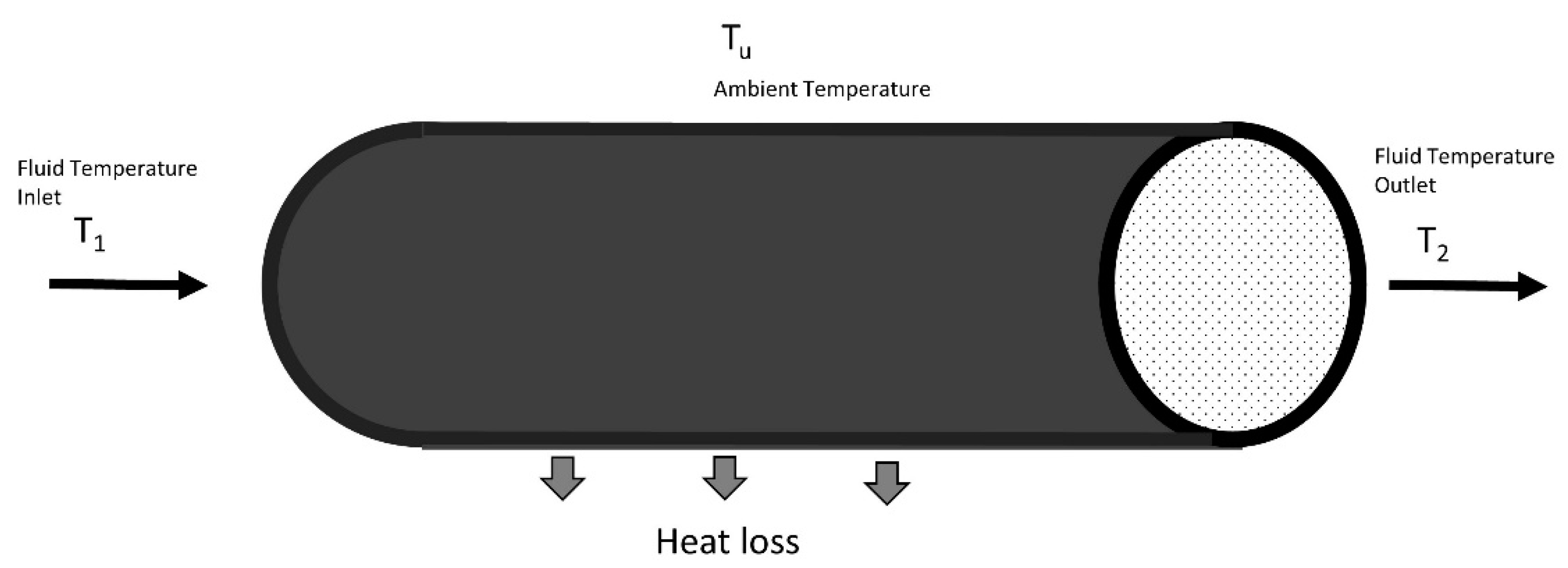

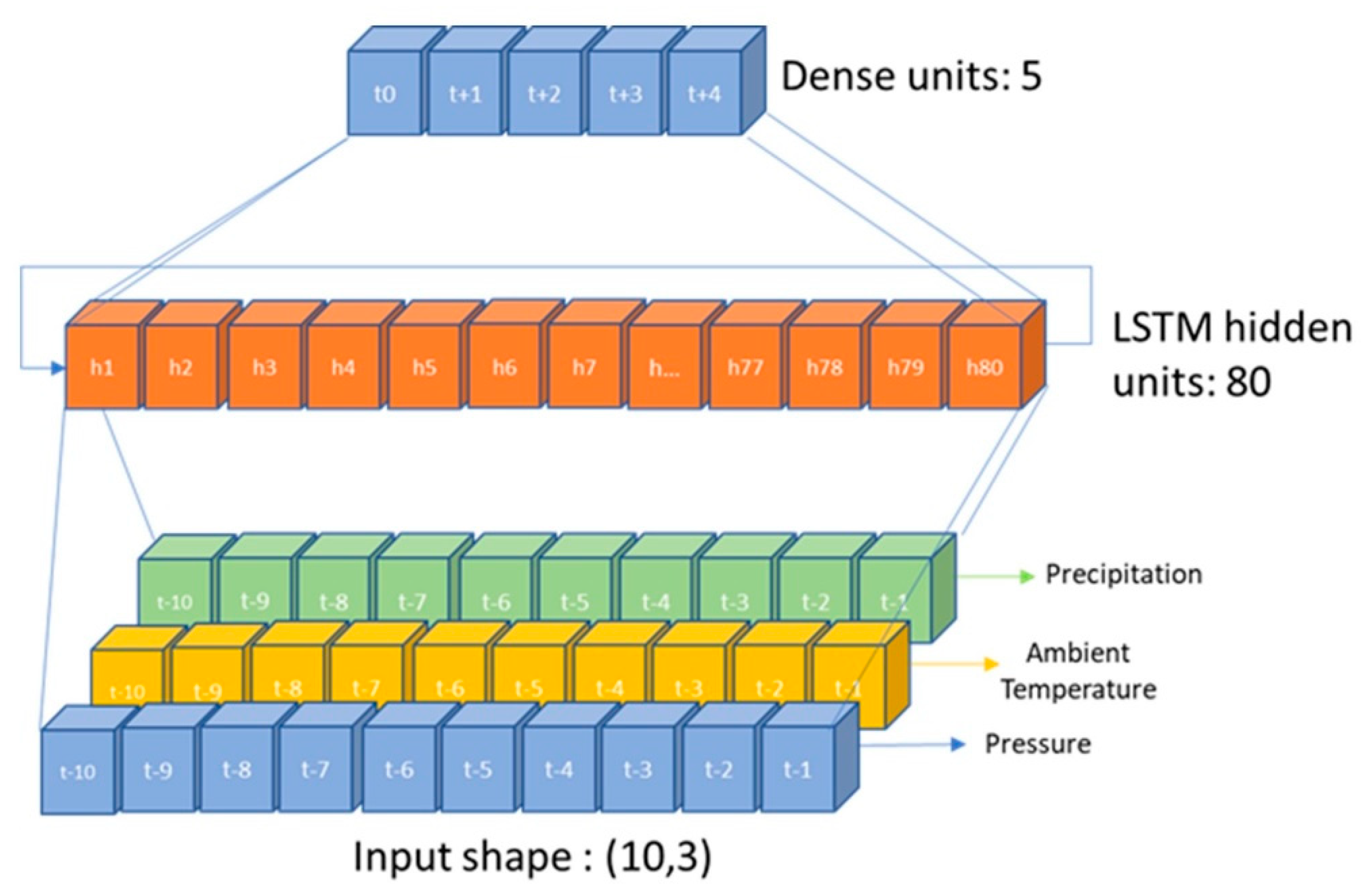

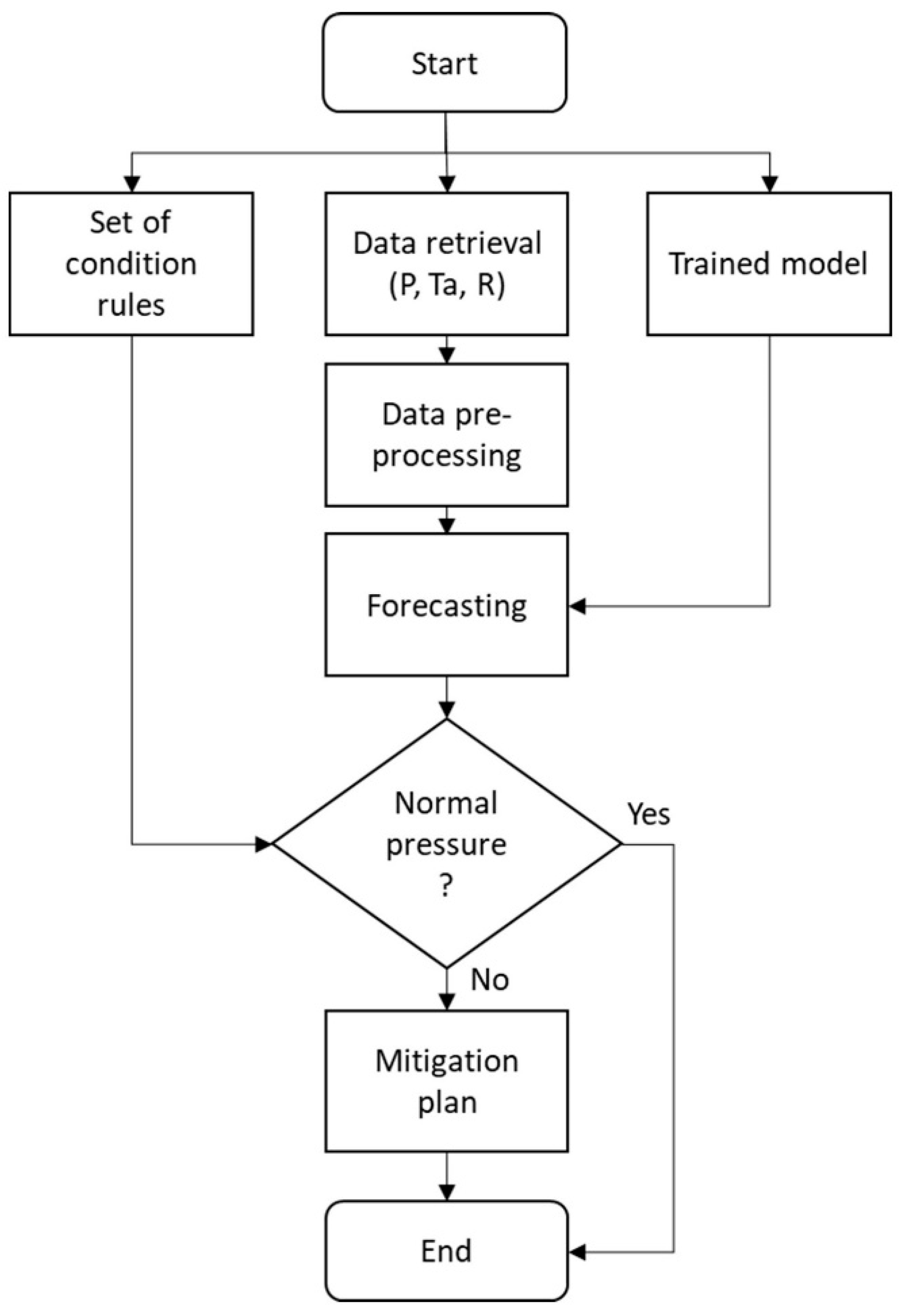
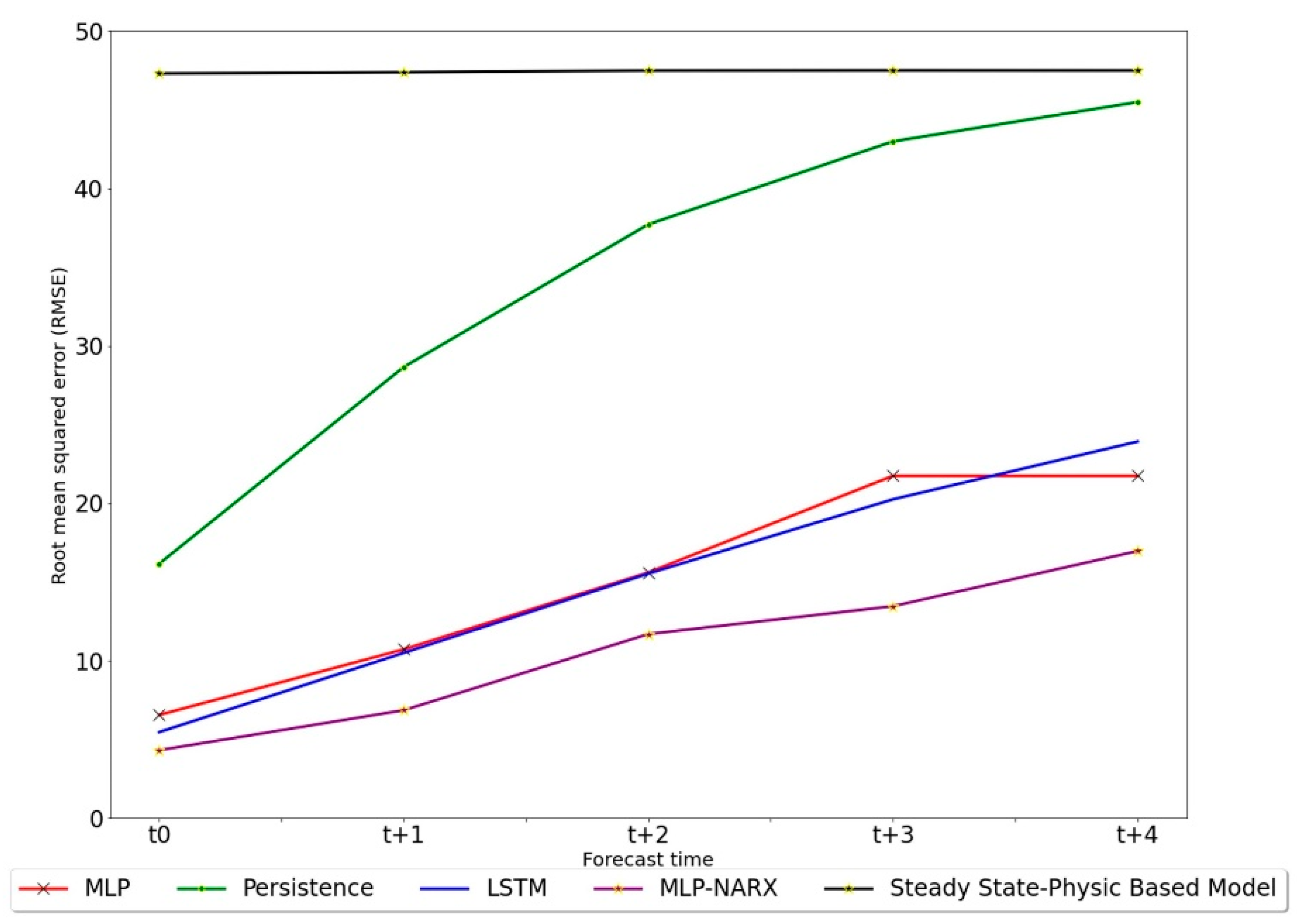
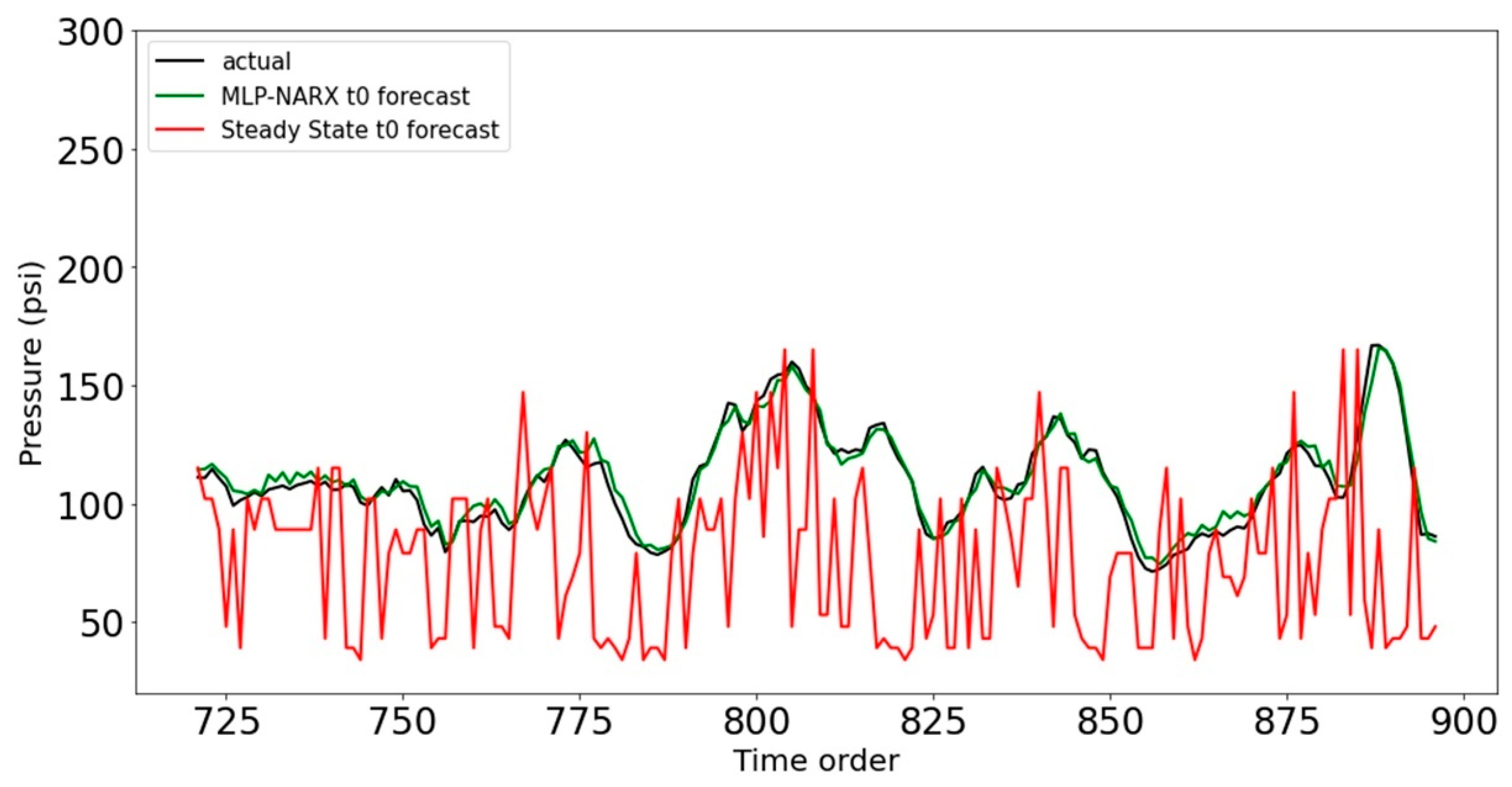
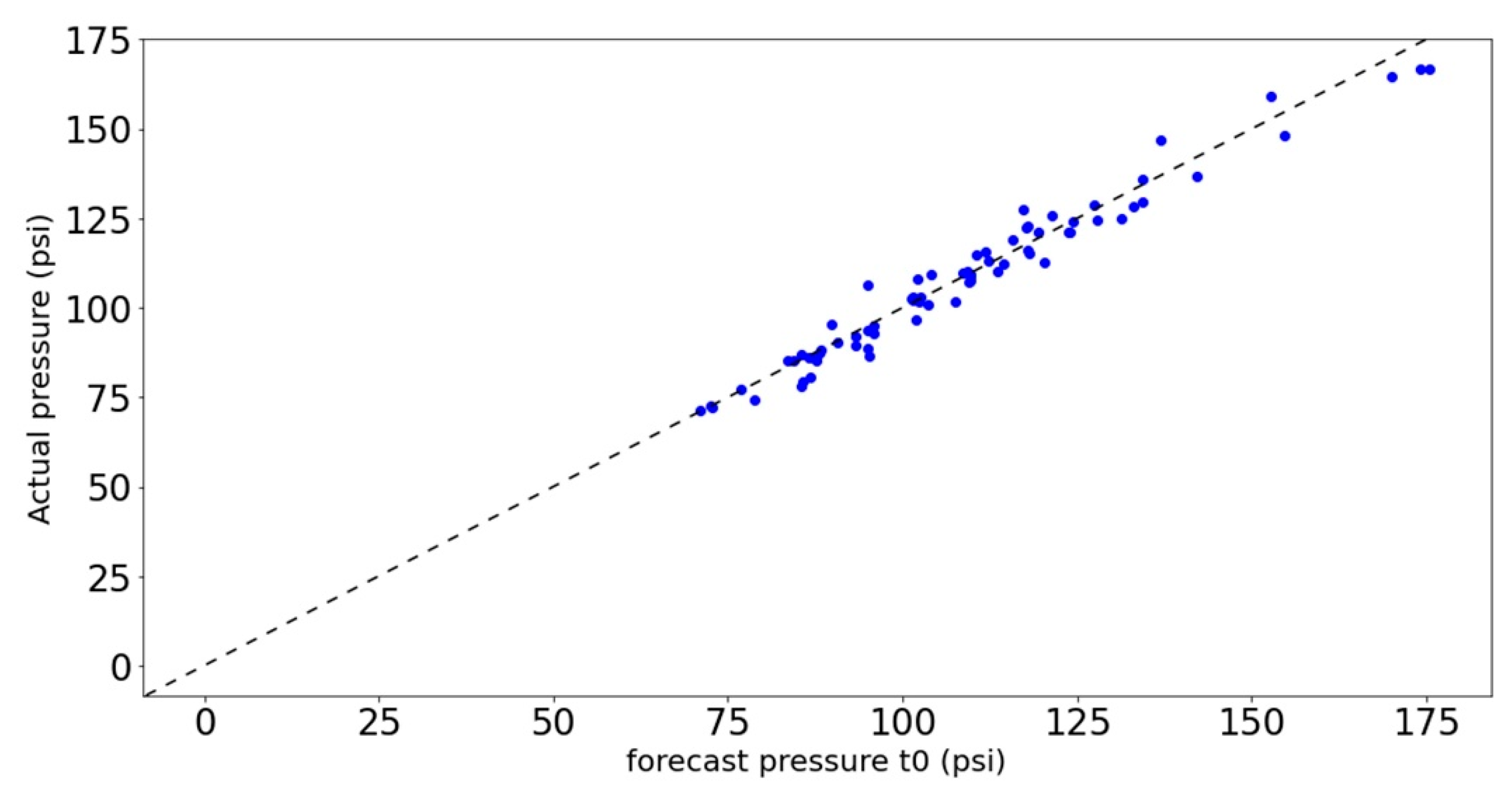

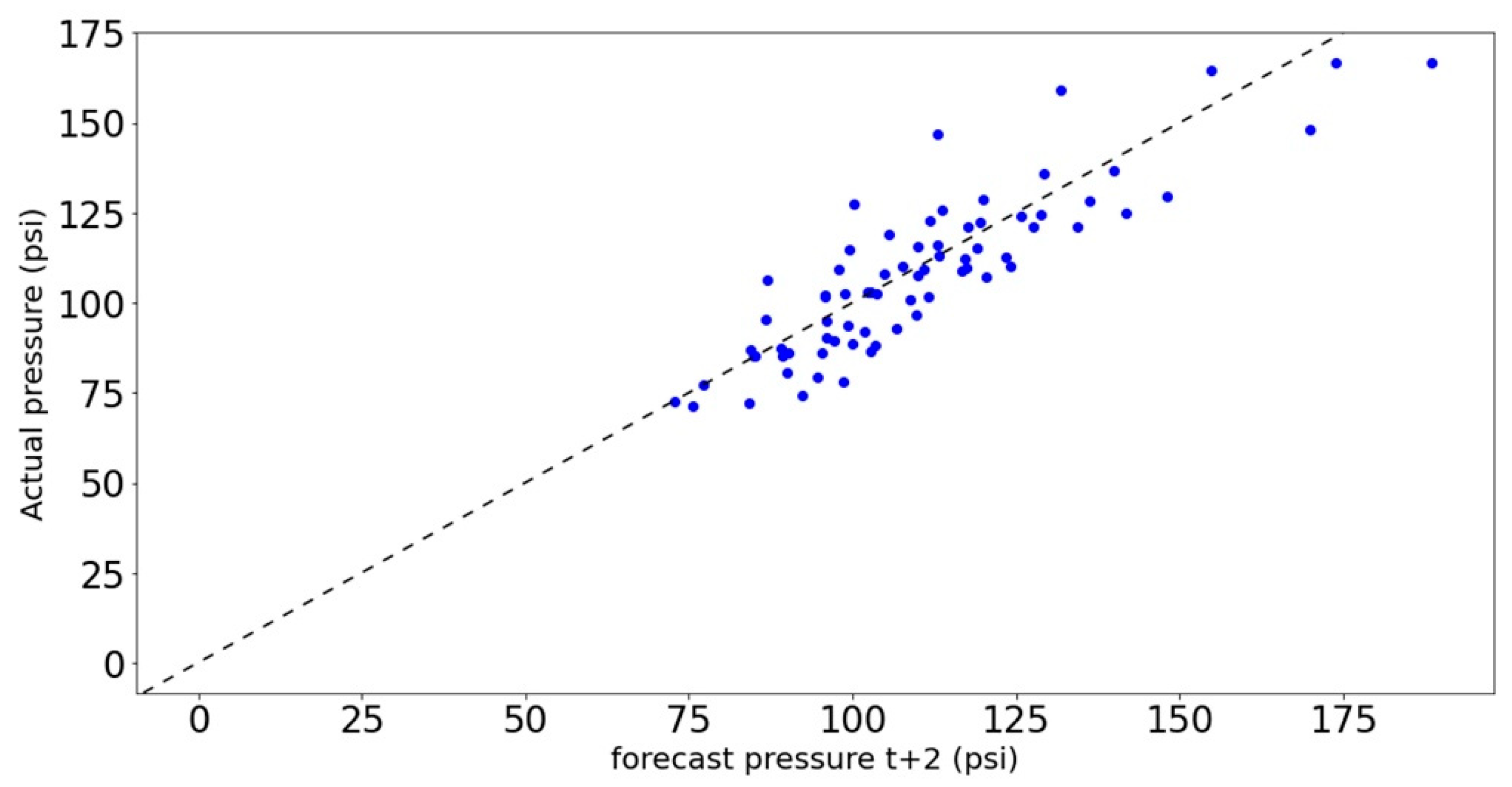
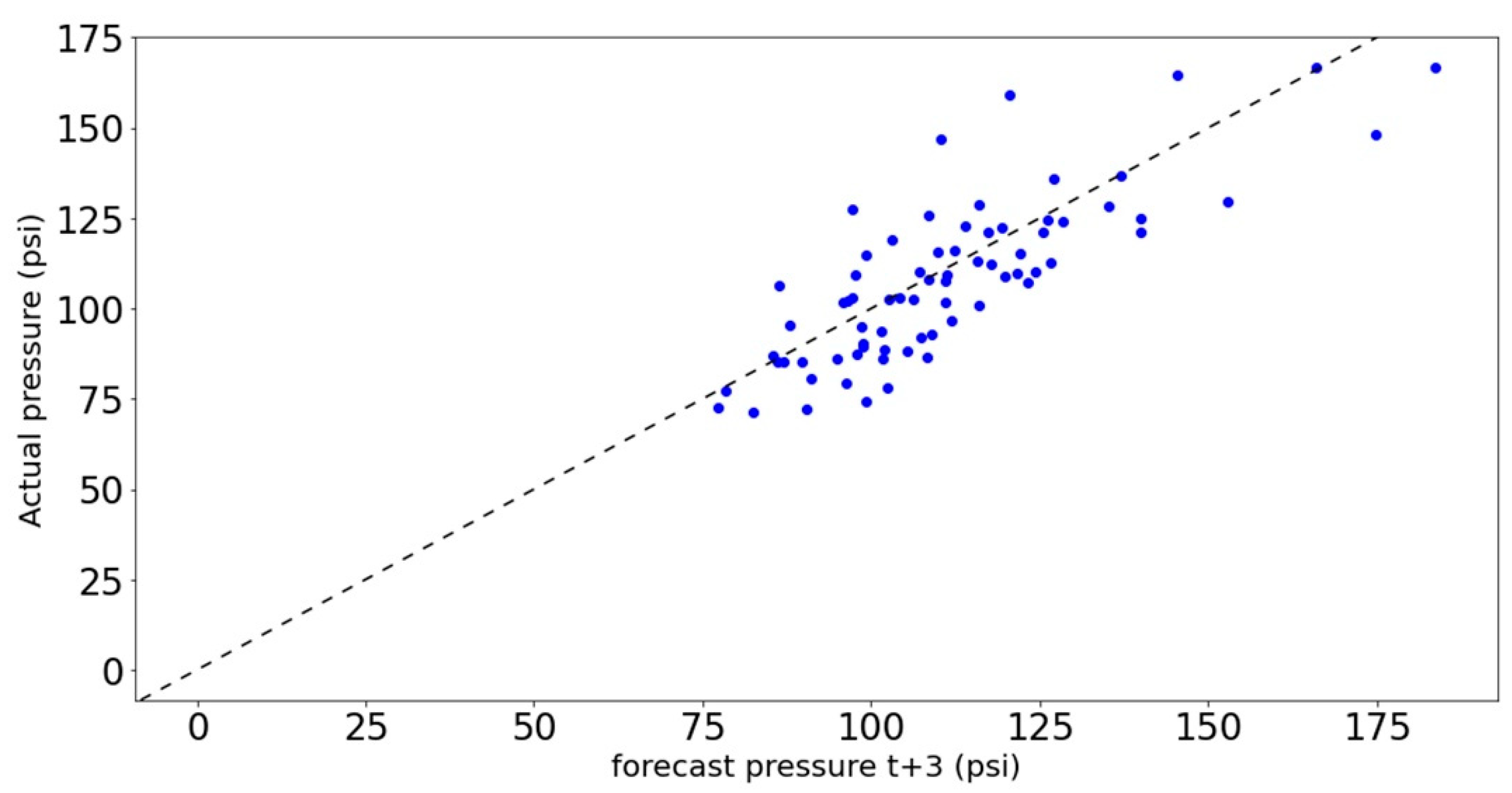
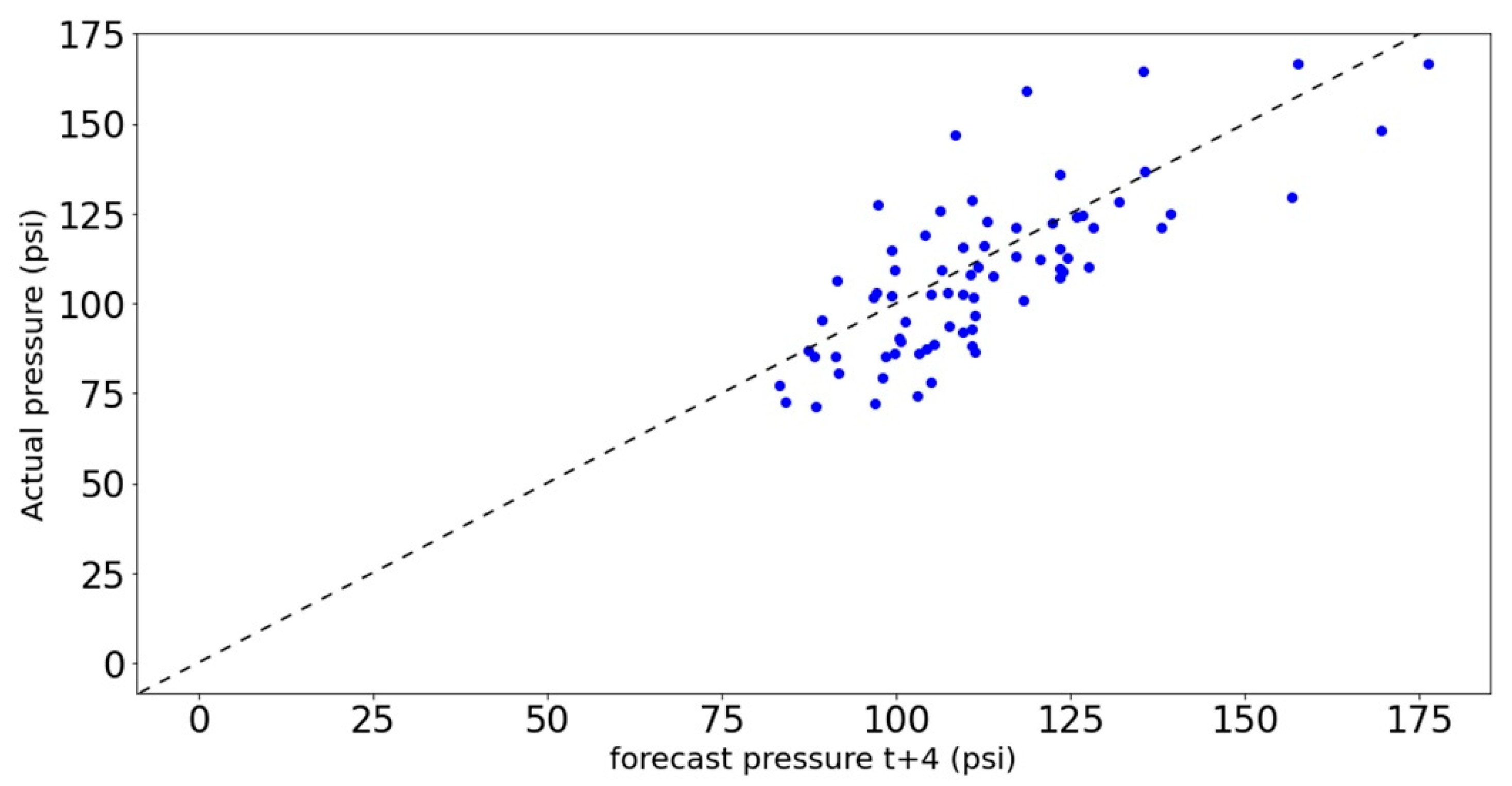
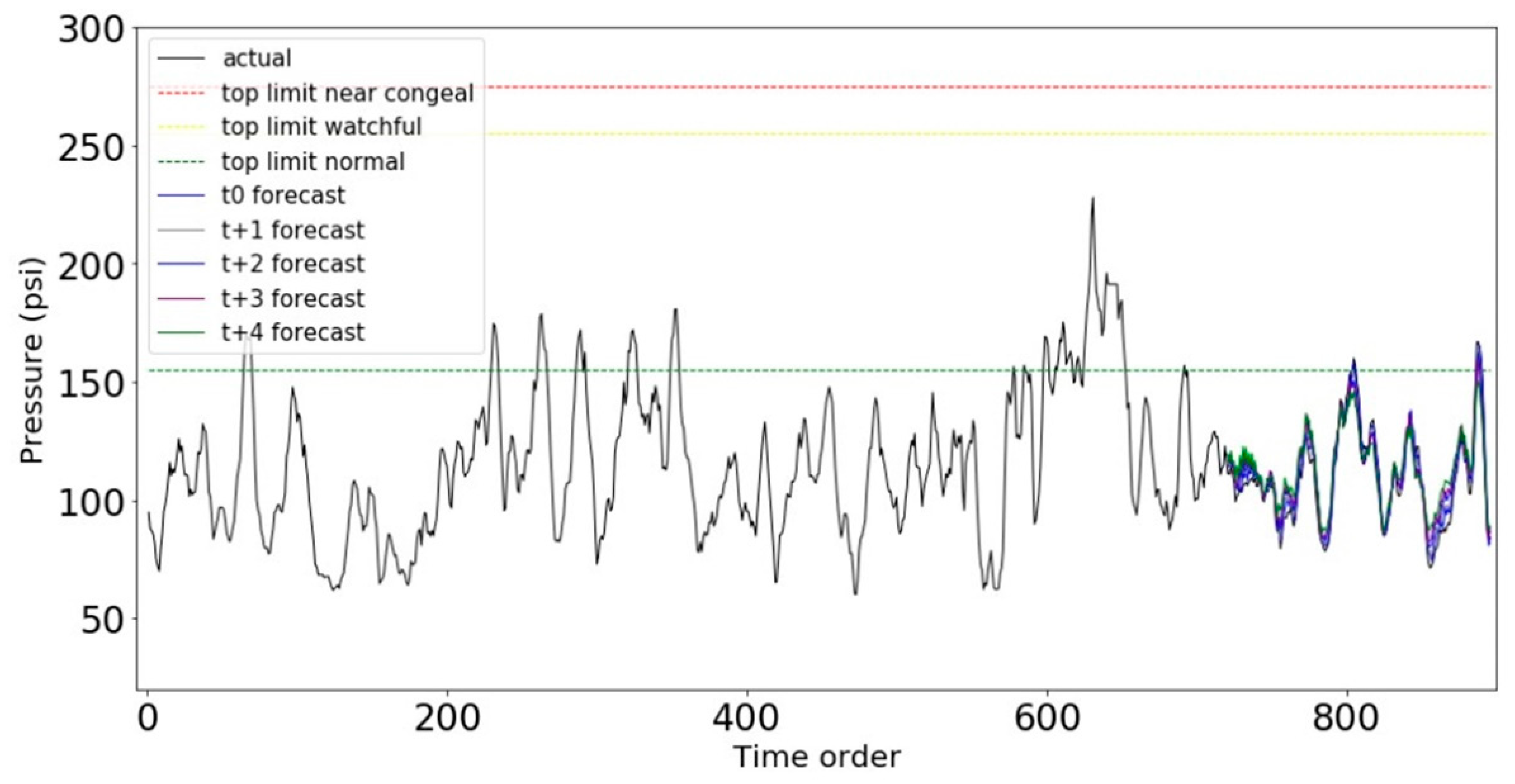
| Status | Pressure Range (psi) | Color Code | Mitigation Action |
|---|---|---|---|
| Normal | <155 | Green | None |
| Caution | 155–255 | Yellow | Increase flowrate from additional well |
| Near congeal | 255–275 | Red | Inject chemical (PPD) |
| Congeal | >275 | Black | Shut off operation and combat congealing |
| Status | Pressure Range (psi) |
|---|---|
| Day of week Day of month Month Min of pressure of previous 3 days Max of pressure of previous 3 days Average of pressure of previous 3 days Slope of pressure of previous 3 days Min of temperature of previous 3 days Max of temperature of previous 3 days Average of temperature of previous 3 days Slope of temperature of previous 3 days Min of precipitation of previous 3 days Max of precipitation of previous 3 days Average of precipitation of previous 3 days Slope of precipitation of previous 3 days Min of temperature of next 4 days Max of temperature of next 4 days Average of temperature of next 4 days Slope of temperature of next 4 days Min of precipitation of next 4 days Max of precipitation of next 4 days Average of precipitation of next 4 days Slope of precipitation of next 4 days | Pressure t0 Pressure t + 1 Pressure t + 2 Pressure t + 3 Pressure t + 4 |
| Step | RMSE | R2 |
|---|---|---|
| t0 | 4.29 | 0.96 |
| t + 1 | 6.83 | 0.89 |
| t + 2 | 11.67 | 0.69 |
| t + 3 | 13.44 | 0.59 |
| t + 4 | 16.95 | 0.36 |
Publisher’s Note: MDPI stays neutral with regard to jurisdictional claims in published maps and institutional affiliations. |
© 2022 by the authors. Licensee MDPI, Basel, Switzerland. This article is an open access article distributed under the terms and conditions of the Creative Commons Attribution (CC BY) license (https://creativecommons.org/licenses/by/4.0/).
Share and Cite
Santoso, A.; Wijaya, F.D.; Setiawan, N.A.; Waluyo, J. Data Mining Algorithms for Operating Pressure Forecasting of Crude Oil Distribution Pipelines to Identify Potential Blockages. Mach. Learn. Knowl. Extr. 2022, 4, 700-714. https://doi.org/10.3390/make4030033
Santoso A, Wijaya FD, Setiawan NA, Waluyo J. Data Mining Algorithms for Operating Pressure Forecasting of Crude Oil Distribution Pipelines to Identify Potential Blockages. Machine Learning and Knowledge Extraction. 2022; 4(3):700-714. https://doi.org/10.3390/make4030033
Chicago/Turabian StyleSantoso, Agus, Fransisco Danang Wijaya, Noor Akhmad Setiawan, and Joko Waluyo. 2022. "Data Mining Algorithms for Operating Pressure Forecasting of Crude Oil Distribution Pipelines to Identify Potential Blockages" Machine Learning and Knowledge Extraction 4, no. 3: 700-714. https://doi.org/10.3390/make4030033








